Are you tired of encountering the dreaded "ERR_NAME_NOT_RESOLVED" error while browsing the web? This error can be a major hindrance, preventing you from accessing your favorite websites and disrupting your online experience. But fear not.
We've compiled a comprehensive guide with 8 effective methods to help you overcome this issue once and for all.Whether you're a tech-savvy individual or a casual internet user, our step-by-step solutions are designed to cater to all skill levels.
From simple troubleshooting techniques like checking your internet connection and clearing your browser's cache to more advanced methods such as changing your DNS server and modifying your host file, we've got you covered.
Don't let the "ERR_NAME_NOT_RESOLVED" error keep you from enjoying the full potential of the internet. Take control of your browsing experience and discover how to resolve this frustrating issue with our proven methods.
In this article, we offer 8 effective solutions to resolve a common browning error. Our discussion will include:
- Check Your Internet Connection
- Clear Browser Cache and Cookies
- Flush DNS Cache
- Check and Reset Browser Settings
- Disable Antivirus and Firewall Temporarily
- Configure DNS Server Settings on Your Device
- Contact Your Internet Service Provider
- Disable DNSSEC for Your Domain
By the end of this guide, you'll possess the necessary knowledge and tools to effectively address this issue whenever it arises. Let's explore these solutions in detail.
What Does You Mean By “ERR_NAME_NOT_RESOLVED”?

The "ERR_NAME_NOT_RESOLVED" error is an error message that appears in your web browser when it is unable to resolve the domain name of the website you're trying to visit. In simpler terms, this means that your browser cannot establish a connection to the server hosting the website.
When you enter a website's URL into your browser, the first step is for your device to contact a Domain Name System (DNS) server.
The DNS server is responsible for translating the human-readable domain name (e.g., www.example.com) into the corresponding IP address (e.g., 192.0.2.1) that computers use to identify and communicate with each other on the internet.
If the DNS server is unable to provide the correct IP address for the domain name, or if there are issues with your internet connection, browser settings, or the website's DNS configuration, your browser will display the "ERR_NAME_NOT_RESOLVED" error message.
8 Effective Methods to Fix "ERR_NAME_NOT_RESOLVED" Error
This error essentially means that your browser could not find the server associated with the website you're trying to access, preventing the page from loading. The error message may vary slightly depending on the browser you're using, but the underlying cause and meaning remain the same.
To resolve this error, you can try various troubleshooting steps, such as checking your internet connection, clearing your browser cache and DNS cache, disabling firewall or antivirus software, or adjusting your DNS settings.
If the issue persists, it may be related to a problem with the website itself, in which case you may need to contact the website owner or hosting provider for further assistance.
Method 1. Connect to a VPN
Connecting to a VPN (Virtual Private Network) can sometimes help resolve the "ERR_NAME_NOT_RESOLVED" error by bypassing DNS-related issues and routing your internet traffic through a different network.
Here's how a VPN can help:
1. Bypassing DNS issues: When you connect to a VPN, your device will use the DNS servers provided by the VPN service instead of your default ISP's DNS servers. If the error is caused by a problem with your ISP's DNS servers, using a VPN can help you circumvent the issue and resolve the domain name correctly.
2. Avoiding ISP restrictions: Some ISPs may block access to certain websites or restrict DNS queries. By using a VPN, you can encrypt your internet traffic and hide it from your ISP, potentially bypassing any restrictions and allowing you to access the desired website.
3. Overcoming geographical restrictions: If the website you're trying to access is geo-restricted or blocked in your region, connecting to a VPN server located in a different country can help you bypass these restrictions and access the website.
4. Improving online privacy and security: VPNs encrypt your internet traffic, making it more difficult for third parties to intercept or monitor your online activities. This added layer of security can help protect your data and maintain your privacy while browsing the web.
To use a VPN to resolve the "ERR_NAME_NOT_RESOLVED" error, follow these steps:
1. Subscribe to a reliable VPN service.
2. Download and install the VPN client on your device.
3. Connect to a VPN server located in a region where the website is accessible.
4. Try accessing the website again. If the error was caused by DNS or ISP-related issues, the VPN connection should help resolve the problem.
Note: While a VPN can be helpful in some cases, it may not always resolve the "ERR_NAME_NOT_RESOLVED" error, especially if the issue is caused by other factors such as browser settings, local network problems, or website-specific issues.
Method 2. Clear Browser Cache and Cookies
If you're looking for a quick and easy solution to the frustrating ERR_NAME_NOT_RESOLVED error message, clearing your browser's cache and cookies is often the most effective approach.
By removing the stored browsing data, you can swiftly resolve the issue and get back to seamless web browsing. In this step-by-step guide, we'll walk you through the process of clearing the cache and cookies in Google Chrome.
Step 1: Access the Browser Settings
Start by clicking on the three vertical dots located in the top-right corner of your Chrome browser. This will open a drop-down menu with various options.
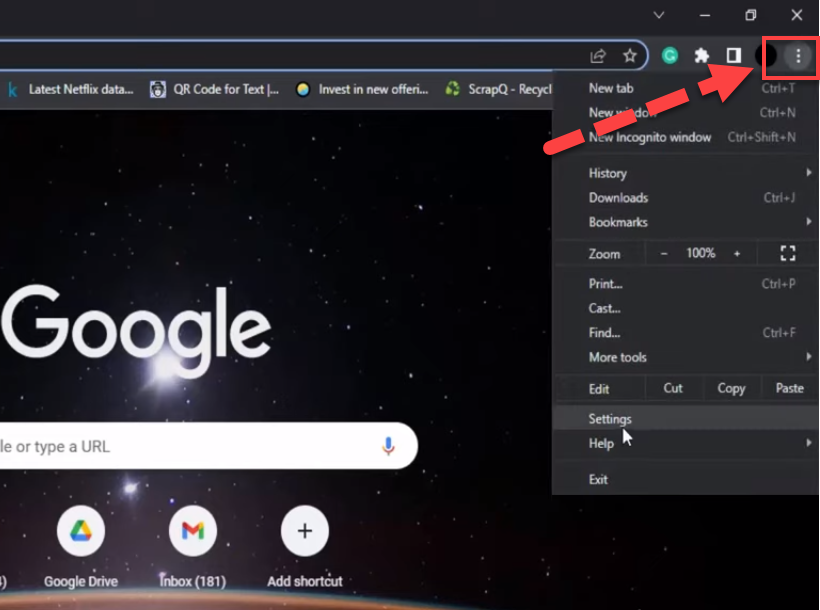
Step 2: Navigate to the "Clear Browsing Data" Option
From the drop-down menu, select "More tools."
This will reveal a sub-menu where you'll find the "Clear browsing data" option. Click on it to proceed.

Step 3. Select the Time Range and Clear the Data
Simply choose the time range for which you need to clear data—options include the last 7 days, 24 hours, 4 weeks, or all time.
Once you select your desired duration, navigate to the bottom of this pop-up where you'll see a blue button labeled 'Clear Data.' Click on it to complete the process.
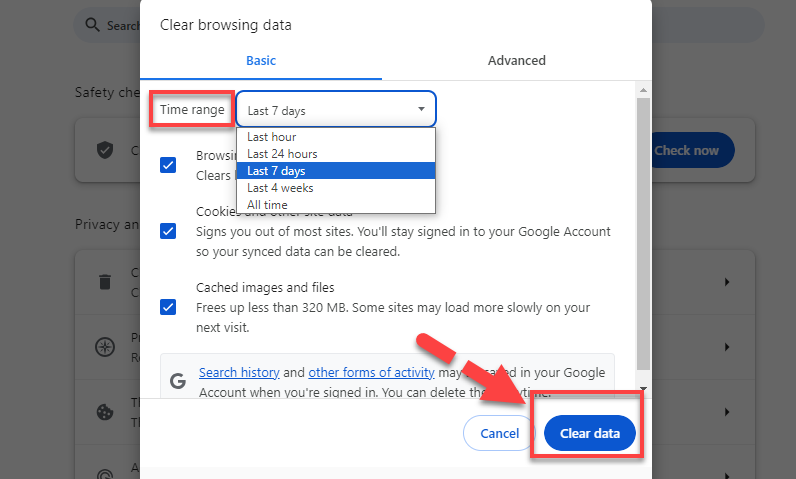
Method 3. Flush DNS Cache
If you're still seeing the pesky ERR_NAME_NOT_RESOLVED error after trying other solutions, it's time to take a closer look at your device's DNS cache.
An outdated or corrupt DNS cache can often be the culprit behind this frustrating error message. Luckily, flushing your DNS cache is a simple process that can help you get back to browsing in no time!
For Windows Users:
- Press the Windows key + R to open the Run dialog box.
- Type "cmd" and press Enter to launch the Command Prompt.
- In the Command Prompt, type "ipconfig /flushdns" (without quotes) and hit Enter.
- If the flush is successful, you'll see a message confirming that the DNS resolver cache has been cleared.
For macOS Users:
- Open the Terminal app (you can find it in the Applications > Utilities folder).
- Type the following command and press Enter: "dscacheutil -flushcache"
- You may be prompted to enter your admin password. Type it in and press Enter.
- The DNS cache will be cleared, and you can close the Terminal.
For Linux Users:
- If you're using the init.d subdirectory, enter the following command: "sudo /etc/init.d/nscd restart"
- If you're using systemd, use this command instead: "systemd-resolve --flush-caches"
- To verify that the cache has been cleared, enter: "systemd-resolve --statistics"
Note:It's a good idea to periodically clear your DNS cache to prevent security vulnerabilities and ensure that your device is accessing the most up-to-date information. By following these simple steps, you'll be able to keep your browsing experience smooth and error-free.
Method 4. Check and Reset Browser Settings
If you've tried flushing your device's DNS cache but still can't seem to shake off the ERR_NAME_NOT_RESOLVED error, it's time to turn your attention to your browser.
Did you know that browsers like Google Chrome have their own DNS cache? That's right! And if this cache is holding on to outdated information, it could be the reason you're still seeing that pesky error message.
Clearing Google Chrome's DNS Cache:
- Open Google Chrome and type "chrome://net-internals/#dns" (without quotes) into the address bar.

- Press Enter, and you'll be taken to a page with advanced network settings.
- Look for the "Clear host cache" button and give it a click.
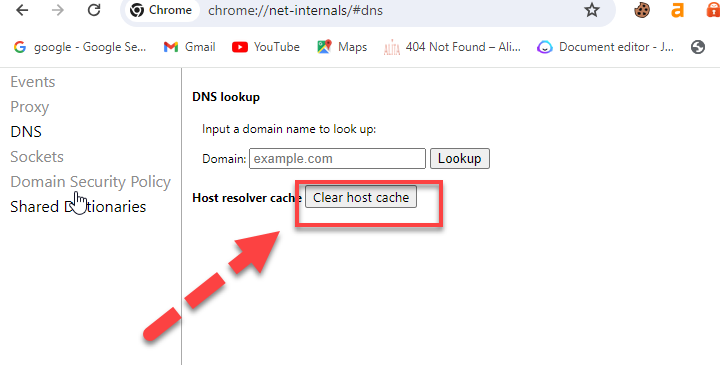
Voila! Chrome's DNS cache is now cleared.
Method 5. Disable Antivirus and Firewall Temporarily
If you've tried clearing your DNS cache and browser cache but still find yourself face-to-face with the dreaded ERR_NAME_NOT_RESOLVED error, it's time to take a closer look at your firewall settings. Sometimes, overzealous security programs can mistakenly identify a website as a threat and block access to it, causing the error to persist.
Resetting Firewall Settings in Windows:
Open the "Settings" app by clicking on the Windows icon in the bottom-left corner of your screen and selecting the gear icon.
- In the Settings window, click on "Privacy & Security" to access the security settings.

- Look for the "Windows Security" option and give it a click.
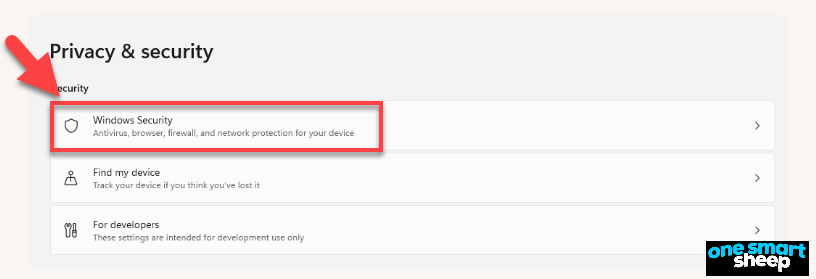
- On the Windows Security page, find and select the "Firewall & network protection" option.
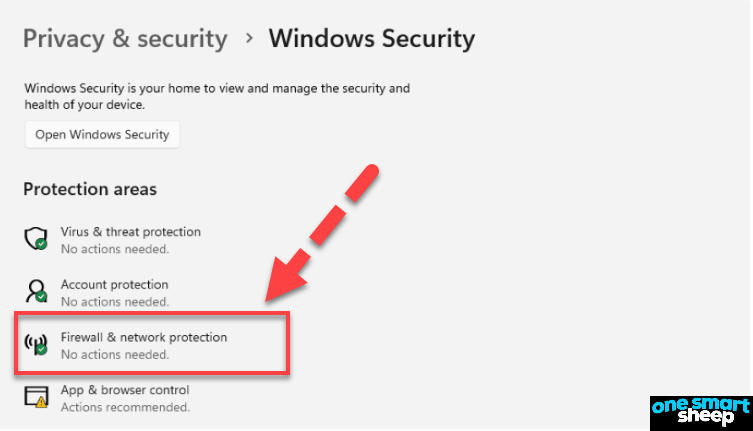
- Scroll down to the bottom of the page, and you'll see a "Restore firewalls to default" option. Click on it.

- A pop-up window will appear, asking you to confirm the action. Click on the "Restore defaults" button to reset your firewall settings to their original state.

Once you've completed these steps, try accessing the website again. If the ERR_NAME_NOT_RESOLVED error has disappeared, congratulations! Your firewall settings were likely the culprit, and resetting them has resolved the issue.
Method 6. Configure DNS Server Settings on Your Device
If you suspect that your current DNS server might be the reason behind the persistent ERR_NAME_NOT_RESOLVED error, it's time to try using Google's reliable public DNS servers instead.
By following these step-by-step instructions, you can easily change your DNS server settings and potentially resolve the error.
For Windows Users:
Open the Control Panel by searching for it in the Windows search bar. Click on "Network and Internet" and then select "Network and Sharing Center."
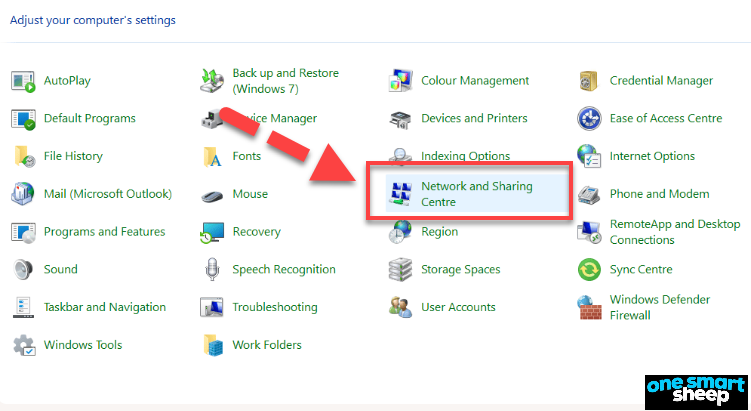
In the Network and Sharing Center, look for your current network connection and click on change adapter settings.
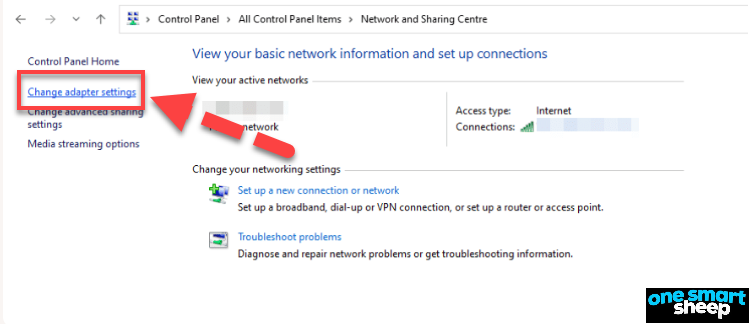
In the window that appears, select "Properties" to access your network's settings.

Scroll through the list until you find "Internet Protocol Version 4 (TCP/IPv4)" or "Internet Protocol Version 6 (TCP/IPv6)," depending on your network configuration. Double-click on the appropriate option.
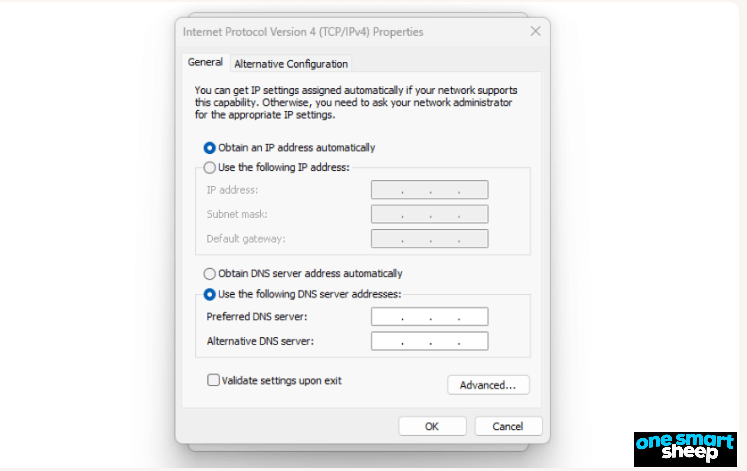
In the next window, select the "Use the following DNS server addresses" option.
Enter the following IP addresses for Google's DNS servers:
- For IPv4: Primary DNS - 8.8.8.8, Secondary DNS - 8.8.4.4
- For IPv6: Primary DNS - 2001:4860:4860::8888, Secondary DNS - 2001:4860:4860::8844
Click "OK" to save the changes and close the windows.
For macOS Users:
- Click on the Apple menu in the top-left corner of your screen and select "System Preferences."
- In the System Preferences window, click on "Network."
- Select your current network connection from the list on the left and click on the "Advanced" button in the bottom-right corner.
- Navigate to the "DNS" tab in the Advanced settings window.
- Click on the "+" button to add a new DNS server.
- Enter the IP addresses for Google's DNS servers (see above for IPv4 and IPv6 addresses).
- Click "OK" to save the changes and then click "Apply" to apply the new settings.
After updating your DNS server settings, try accessing the website again. If the ERR_NAME_NOT_RESOLVED error has disappeared, you've successfully resolved the issue by switching to Google's reliable public DNS servers.
Method 7. Check Your Internet Connection
When you encounter the frustrating ERR_NAME_NOT_RESOLVED error, the first thing to consider is whether your internet connection is the culprit. Before diving into more complex troubleshooting steps, it's essential to rule out any issues with your network.
Test 1: Access the Website from a Different Network
One of the easiest ways to identify if your internet connection is the problem is by trying to access the website from a different network.
If you're currently connected to your home WiFi, try using your mobile phone's hotspot or visit a nearby café with free WiFi.
If the website loads without any issues on the alternative network, it's a clear indication that your primary internet connection is the root cause of the ERR_NAME_NOT_RESOLVED error.
Test 2: Connect Multiple Devices to the Same Network
Another effective test is to connect multiple devices, such as your smartphone, tablet, or another computer, to the same network and attempt to access the website on each device.
If all devices display the same ERR_NAME_NOT_RESOLVED error, it strongly suggests that the issue lies with your internet connection rather than a specific device or browser.
Solution 1: Restart Your Router
If you've determined that your internet connection is the problem, the first solution is to restart your router. This simple act can often resolve connectivity issues and restore your access to the website. Follow these steps:
- Turn off your router and unplug it from the power source.
- Wait for at least 30 seconds to allow the router to fully discharge.
- Plug the router back in and turn it on.
- Give the router a few minutes to reestablish a connection and stabilize.
- Reconnect your device to the network and try accessing the website again.
Solution 2: Check Your Internet Speed and Stability
A slow or unstable internet connection can also contribute to the ERR_NAME_NOT_RESOLVED error. To assess your internet speed and stability, follow these steps:
- Visit a reliable speed testing website, such as Speedtest.net or Fast.com.
- Run the speed test and take note of your download and upload speeds.
- Compare the results to your internet plan's advertised speeds. If there's a significant discrepancy, contact your internet service provider for assistance.
- Additionally, check for any fluctuations or drops in your connection by monitoring the speed test results over a period of time.
Method 8. Disable DNSSEC for Your Domain
If you've tried all the troubleshooting methods we've discussed so far and you're still seeing the ERR_NAME_NOT_RESOLVED error, there's one more potential culprit to investigate:
DNSSEC. This security extension is designed to protect your DNS records from unauthorized access, but if you've recently switched to a new web host, it might be preventing your domain from propagating properly.
Checking if DNSSEC is Enabled for Your Domain
- Open your preferred web browser and navigate to a WHOIS lookup tool, such as WhoisLookup.com or WHO.is.

- Enter your domain name into the search bar and press Enter.
- In the WHOIS record that appears, look for the "DNSSEC" field.

- If the value next to "DNSSEC" says "signed," then DNSSEC is currently enabled for your domain.
Disabling DNSSEC to Resolve the ERR_NAME_NOT_RESOLVED Error
If you've confirmed that DNSSEC is enabled for your domain and you suspect it might be causing the ERR_NAME_NOT_RESOLVED error, you'll need to disable it.
The process for disabling DNSSEC varies depending on your domain registrar or hosting provider, but here are some general steps to follow:
- Log in to your domain registrar account or hosting dashboard (depending on where you purchased your domain).
- Navigate to the DNS management section of your account.
- Look for an option related to DNSSEC, such as "Disable DNSSEC" or "Manage DNSSEC."
- Follow the prompts to disable DNSSEC for your domain.
- Save your changes and allow some time for the updated settings to propagate across the internet (this can take up to 48 hours).
Why "ERR_NAME_NOT_RESOLVED" Error Occur in Chrome Browser
The "ERR_NAME_NOT_RESOLVED" error occurs when your browser is unable to establish a connection to the website you're trying to access. There are several reasons why this error may appear:
1. Internet connectivity issues: A weak or unstable internet connection can prevent your browser from resolving the website's domain name.
2. DNS cache issues: Your device's DNS cache may be storing outdated or incorrect information, leading to the error.
3. Browser cache issues: Similar to the DNS cache, your browser's cache may be holding onto outdated data, causing the error to appear.
4. Incorrect DNS settings: If your device's DNS settings are misconfigured or pointing to an unreliable DNS server, it can result in the "ERR_NAME_NOT_RESOLVED" error.
5. Firewall or antivirus software: Overly restrictive firewall settings or aggressive antivirus software can sometimes block connections to certain websites, causing the error.
6. Website DNS issues: If the website you're trying to access has problems with its DNS configuration, such as incorrect or expired DNS records, it can lead to the "ERR_NAME_NOT_RESOLVED" error.
7. ISP DNS server issues: If your Internet Service Provider's DNS servers are experiencing problems or are overwhelmed with requests, it can cause the "ERR_NAME_NOT_RESOLVED" error to appear.
8. DNSSEC-related issues: If the website you're trying to access has recently enabled DNSSEC (DNS Security Extensions) and your DNS resolver doesn't support it, you may encounter the error.
By understanding the various potential causes of the "ERR_NAME_NOT_RESOLVED" error, you can more effectively troubleshoot the issue and implement the appropriate solution to restore your access to the website.
Discover Other Common DNS Errors and How to Fix Them
While the ERR_NAME_NOT_RESOLVED error is a frequent issue, it's not the only DNS-related problem you might encounter. Other common DNS errors include:
- DNS_PROBE_FINISHED_NXDOMAIN
- DNS Server Not Responding
- ERR_NAME_RESOLUTION_FAILED
These errors often have similar root causes and can be resolved using comparable troubleshooting methods. To start, try clearing your browser cache and flushing your device's DNS cache, as these steps can often resolve the issue quickly.
However, if the problem persists, it may be originating from the server side. In such cases, don't hesitate to reach out to your hosting provider for assistance.
Provide them with as much information as possible about the error you're experiencing, and they'll be well-equipped to help you identify and resolve the issue.
By understanding the various DNS errors and their common solutions, you'll be better prepared to tackle these issues head-on and minimize any downtime for your website.
Wrapping Up
The "ERR_NAME_NOT_RESOLVED" error is a common issue that prevents users from accessing websites when the browser fails to establish a connection with the server.
This comprehensive guide offers eight effective methods to resolve the error, catering to both tech-savvy individuals and casual internet users.
The article begins by explaining the meaning of the "ERR_NAME_NOT_RESOLVED" error, which occurs when the browser cannot resolve the domain name of the website into its corresponding IP address. It then delves into the eight methods to fix the error:
1. Check your internet connection
2. Clear browser cache and cookies
3. Flush DNS cache
4. Check and reset browser settings
5. Disable antivirus and firewall temporarily
6. Configure DNS server settings on your device
7. Connect to VPN
8. Disable DNSSEC for your domain
Each method is explained in detail, providing step-by-step instructions for various operating systems and browsers. The guide also discusses the potential causes of the error, such as internet connectivity issues, DNS cache problems, incorrect DNS settings, and website DNS issues.
















.svg)
.svg)
.svg)

